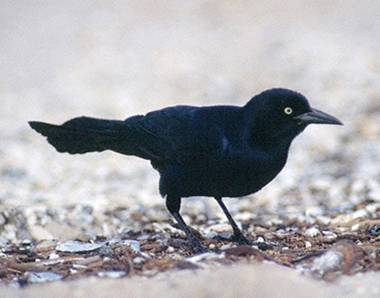The art and science of wildlife management has always been rooted in population and habitat management. The objectives may vary from species to species, but the bulk of management has focused on these topics. Another component of wildlife management, however, is the control of nuisance wildlife. Enter another topic of concern — the use of lead shot in the field. For decades now, there has been concern on using lead shot for hunting, but now it seams lead shot is banned for hunting and controlling nuisance birds.

On February 8, 2011, the U.S. Fish and Wildife Service (USFWS) has banned the use of lead ammunition for hunting nuisance birds, citing the need to prevent lead toxicity hazards to wildlife. The decision was published by USFWS as a final rulemaking action in the Federal Register. So that’s that.
Depredation orders are regularly issued by the USFWS to allow the killing of migratory birds such as crows, grackles, and blackbirds which are causing damage to both public or private property, pose a health or safety hazard, or are damaging agricultural crops or wildlife. This new “non-lead regulation” will require the use of non-toxic ammunition in the control of these nuisance birds. Dr. Michael Fry, one of the world’s leading avian toxicologists, had this to say about the new ruling:
“We’re very supportive of USFWS in siding with wildlife on this issue. Depredation hunting tends to leave large amounts of highly toxic lead ammunition on the ground that non-target birds and other wildlife consume while mistaking it for food. Those birds or other wildlife will either die agonizing deaths shortly thereafter or suffer severe illness for a prolonged period. We have had many discussions with USFWS about using non-toxic shot for all agency operations and we are very glad they have made this decision.”
It appears the non-toxic shot debate has found a home at the federal level. When questioned about the issue, the EPA responded that they did not have the authority to regulate lead ammunition, though Congressional legislative history records document that they did have such authority. EPA then later denied the fishing gear portion of the petition saying that evidence of impacts from fishing gear were being addressed by some States, and national regulations would be overly burdensome.
“This decision is important not only because it will keep a highly toxic substance from being strewn across the landscape, but it will also prevent birds or other wildlife that might scavenge the remains of lead-shot nuisance birds, such as Bald Eagles, bobcats and raccoons from becoming innocent mortality victims as well.”
The lethal impacts of lead in our environment are so well documented and accepted by the science, health and wildlife community that any deliberate release of lead into a public environment should be viewed as unacceptable. The Federal Government has shown concern for human impacts of lead, so it’s good to see they are showing the same level of concern for wildlife. I know many hunters may disagree with this ruling, but in the long-run this is a step in the right direction. Non-toxic shot has proven effective in the field, and I think any any step we can do to help protect wildlife and habitat is a step hunters need to take.
Lead is used in countless products that you would never suspect. Leaded steel is used in many small precision machined screws and hardware, because it cuts easily and with a smooth finish. That wristwatch of yours and all your electronic equipment has lots of leaded steel in it. It might DOUBLE or TRIPLE the price of these items to mandate unleaded steel.
Car batteries also ave lead in them, and there is no practical substitute. When I was in engineering college in ‘1972, a car manufacturer came to school and offered $50K to any student who could come up with a substitute for a lead storage battery. NO ONE had any idea how to do this, and they still have no good substitutes, except extremely expensive lithium batteries, which have their own health hazards.
Some lubricants also have lead in them.